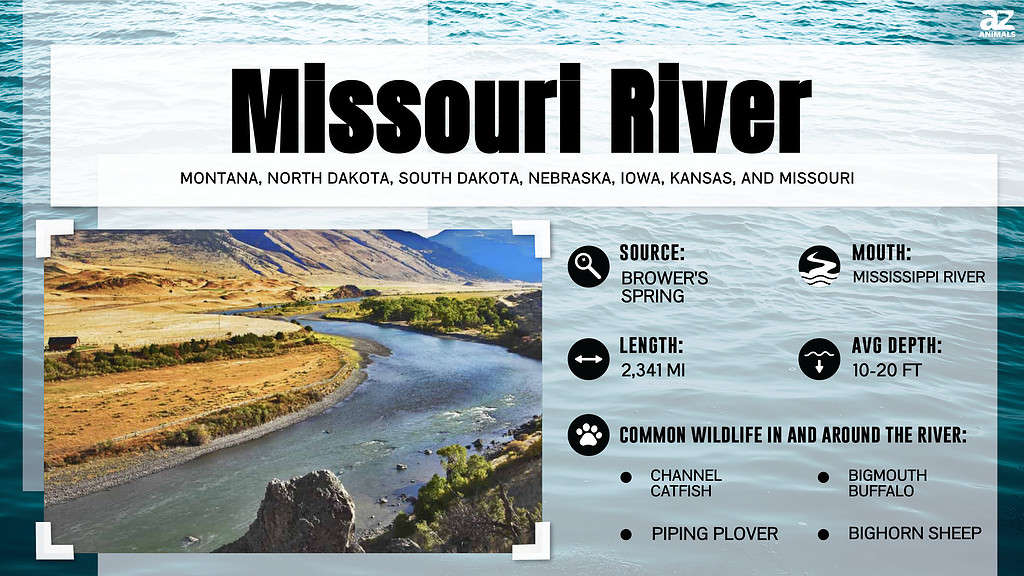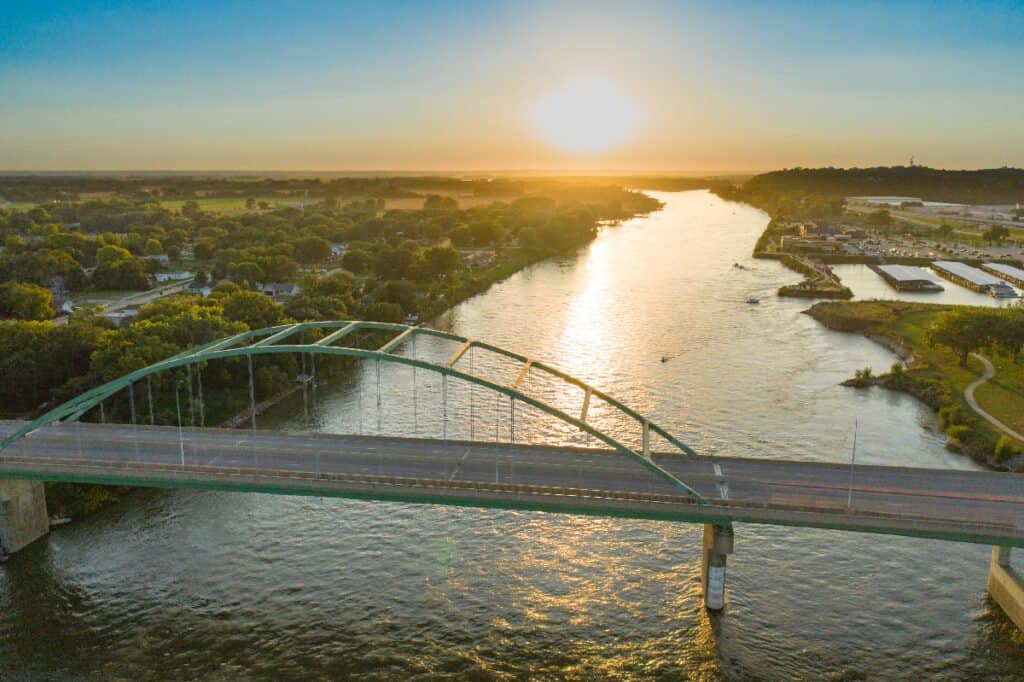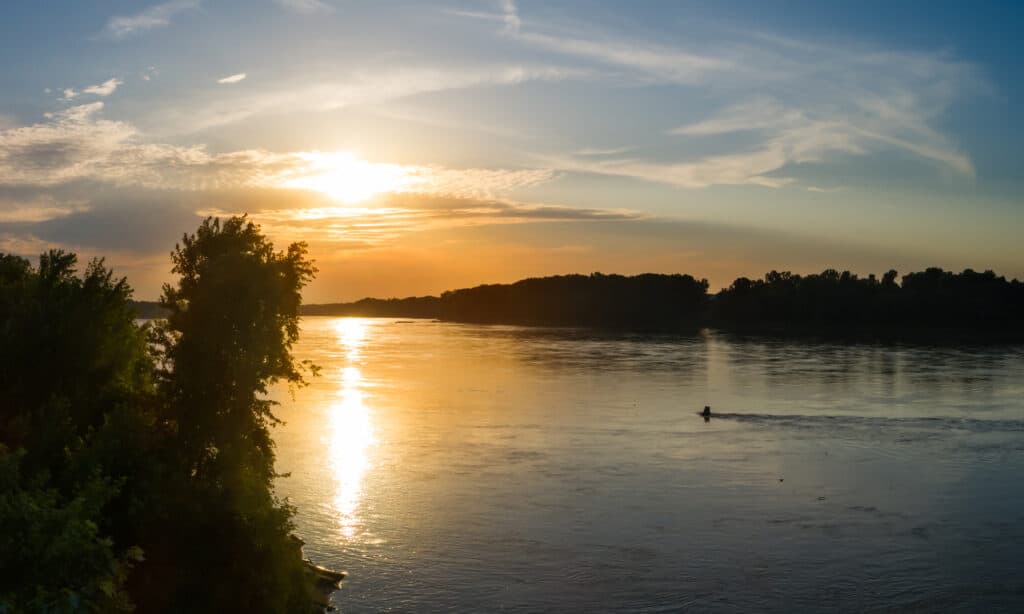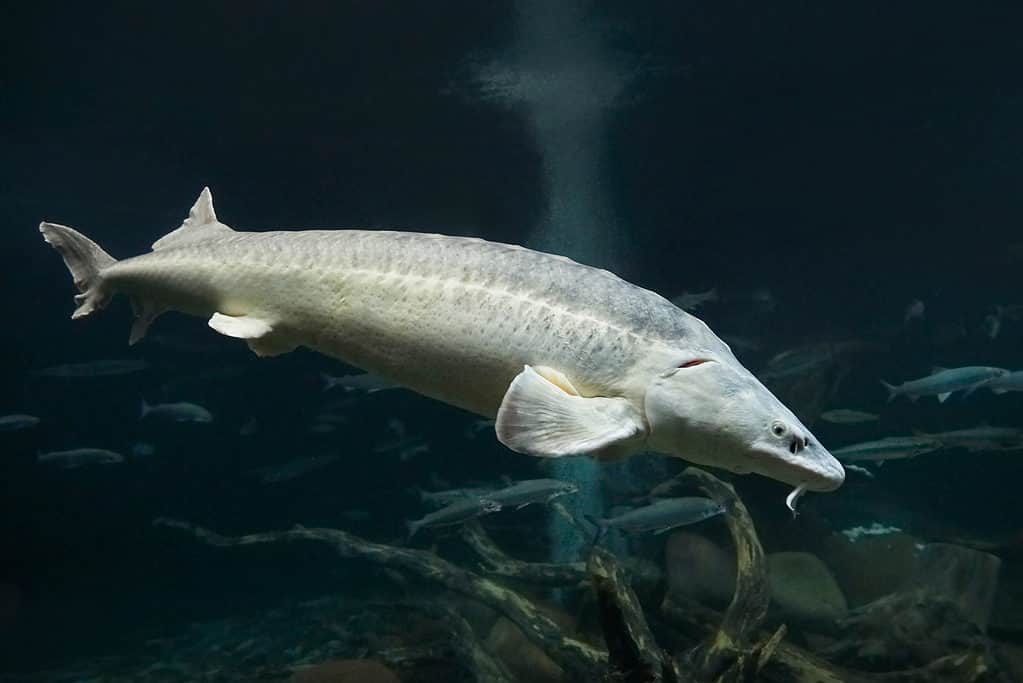When someone asks you what the longest river in the United States is, you might immediately think of the Mississippi River. It’s a common mistake, as the Mississippi River is one of the most renowned rivers in the country. And to top that, the letters in the name “Mississippi River” sure make it look long enough. However, the Mississippi River isn’t the longest in the United States. Instead, the Missouri River holds this title.
This river is known as the “Center of Life” on the Great Plains because it has provided food, trade, transportation, and exploration to millions of people over the years. It had a significant impact on American society in the past, and it continues to do so now. The Missouri River watershed supports at least one-fourth of U.S. agriculture, allowing for the production of one-third of the country’s barley, oats, and wheat. Given the river’s famously lengthy route, one question remains: how deep is the Missouri River? This article will discuss the river’s depth, length, wildlife, and other facts.

The Missouri River is known as the Big Muddy because of the large amount of sand and sediment that it accumulates. Despite its relatively shallow and variable depth, the Missouri is a fast-flowing river because of the sheer volume of water that flows through it. This combination can make swimming or boating in Missouri extremely treacherous, as it is easy to get bogged down in hidden mud.
What’s the Depth of the Missouri River?

Depending on the area, the Missouri River is about 10 to 20 feet deep.
©iStock.com/Matthew Howieson
The Missouri River channel is around 10 to 20 feet deep on average, depending on the area. Some parts decrease in depth, especially going outside the channel. It is estimated that some of its deeper areas can reach depths up to 150 feet. However, this river connects and combines with another (the Mississippi River), becoming one of the world’s largest flowing systems. Some of the navigation channels that have been dredged in the Missouri River are 200 feet deep.
Because there is a large amount of sand and water-soaked gravel beneath the surface, the average depth of this water is shallow compared to other rivers in the country. Swimming in the Missouri River is dangerous due to fluctuating levels of sandbars, boulders, holes, and fast-moving currents. Even paddlers must be cautious because the river’s depth varies so much.
The river is frequently more predictable when the peaks of these objects are out of the water. The quicker water will be found in the channel, whereas the slower water will be located behind or directly downstream of the rock structures. On the other hand, higher river levels frequently overtop the wing dams, resulting in substantially stronger vortex lines, boils, and reverse hydraulics across a larger river area.
Paddlers should familiarize themselves with the impact of river levels on the segment they plan to kayak. Each segment of the river is unique, and tributary inflow has a significant impact on local river levels.
When sandbar camping on the Missouri River, a good rule of thumb is to wait until the Boonville River level gauge is 10 feet or lower. Keep in mind, though, that the Missouri River can rise quickly and wash away your sandbar! Avoid camping on a sandbar without considering how a river rise would affect your circumstances.
Is the Missouri River Fast?

The Missouri River is one of the fastest rivers in the U.S.
©ZakZeinert/Shutterstock.com
The simple answer is yes. The Missouri River is, in fact, among the fastest rivers in the United States. With an average discharge rate of 86,300 cfs, the Missouri River is ranked tenth among the country’s fastest rivers. This river drains a semi-arid, sparsely populated watershed that encompasses portions of eleven U.S. states and two Canadian provinces.
Which States Does the Missouri River Flow Through?

The Missouri River flows through areas of the U.S. and Canada.
©NSC Photography/Shutterstock.com
The Missouri River flows through seven states in the United States and two provinces in Canada. It travels 2,341 miles across the U.S. before reaching a halt in Missouri. It travels through Iowa, Nebraska, Missouri, Kansas, North Dakota, and South Dakota, beginning in Montana and ending in St. Louis. The Missouri River passes through Alberta and Saskatchewan, Canada’s two provinces.
The Missouri River starts in Three Forks, Montana, at the confluence of three major rivers: Madison, Jefferson, and Gallatin, and ends in St. Louis, Missouri.
Approximately 20 miles north of St. Louis is where the river meets the Mississippi River. The Mississippi River originates in Minnesota and flows through the Midwest until it reaches the Missouri River in Missouri. Both rivers meet at this point and run through Arkansas, Tennessee, Mississippi, and Louisiana. About a hundred miles south of New Orleans, the mouth opens into the Gulf of Mexico.
Where Is the Missouri River Located on a Map?
The Missouri River begins in Gallatin County in southwestern Montana. Major cities along the river include Great Falls (Montana), Bismarck (North Dakota), Pierre (South Dakota), Sioux City (Iowa), Omaha (Nebraska), Kansas City (Kansas and Missouri), Jefferson City (Missouri), and Saint Charles (Missouri).
How Old Is the Missouri River?
The Missouri River has its origins in the Rocky Mountains of southwestern Montana, which were formed during the Laramide Orogeny, a mountain-building event that occurred around 50-70 million years ago. This orogeny caused the Western Interior Seaway — a large sea stretching from the Arctic Ocean to the Gulf of Mexico — to recede, leaving behind the sediment that now makes up the Missouri River’s drainage basin. The Laramide Orogeny is integral to Missouri’s current hydrology since snow and ice melting in the Rockies are responsible for most of the river’s flow and its tributaries.
Native Americans used the river for trade, transportation, and commerce while pioneers traversed along its banks, looking to settle new lands on their way westward. Many battles were fought over control of this important waterway during US history as several states wanted access to it. Today, even though modern technology allows people other ways of transporting goods, the Missouri River still plays a major role in moving cargo up and down the country’s midsection. Its importance cannot be understated both historically and today as it continues to serve an invaluable purpose for those who live near or use it for shipping purposes.
What Animals Are in the Missouri River?

Many fish species, such as sturgeon, swim in the depths of the Missouri River.
©pixel creator/Shutterstock.com
More than 25 different species of wildlife can be found along the Missouri River. It is home to large mammalian species, such as the American bison, and the grizzly bear, and others, like foxes, black bears, and coyotes. It’s also home to various small creatures, including mice, squirrels, beavers, minks, muskrats, striped skunks, bats, and prairie dogs.
There are numerous varieties of fish and amphibians found in the river. Frogs, toads, and one species of salamander are among the ten amphibian species discovered in the Missouri National Recreational River. For many years, the Missouri River has been used for transport, water use, drainage, hunting, and fishing. This river is home to a wide variety of fish species, including the most popular crappie, trout, sturgeon, bass, bluegill, longnose gar, carp, paddlefish, sunfish, alligator gar, catfish, and other big fish. On rare occasions, bull sharks have swum from the Gulf of Mexico up the Mississippi River and via the Missouri River. They’ve even been discovered in St. Louis, Missouri, a landlocked state with no sharks!
Many species of birds use this river as a migration route, and the bottomland is a feeding, breeding, wintering, and staging area for migrating species. The imperiled Piping Plover endangered Interior Tern, and spectacular American Bald Eagle are among the MNRR’s most renowned bird species. Despite the changes along the Missouri River over the last two centuries, reptiles still roam its land and waters. There are 12 different snakes and many turtle species found in the river.
The photo featured at the top of this post is © ZakZeinert/Shutterstock.com
Thank you for reading! Have some feedback for us? Contact the AZ Animals editorial team.






